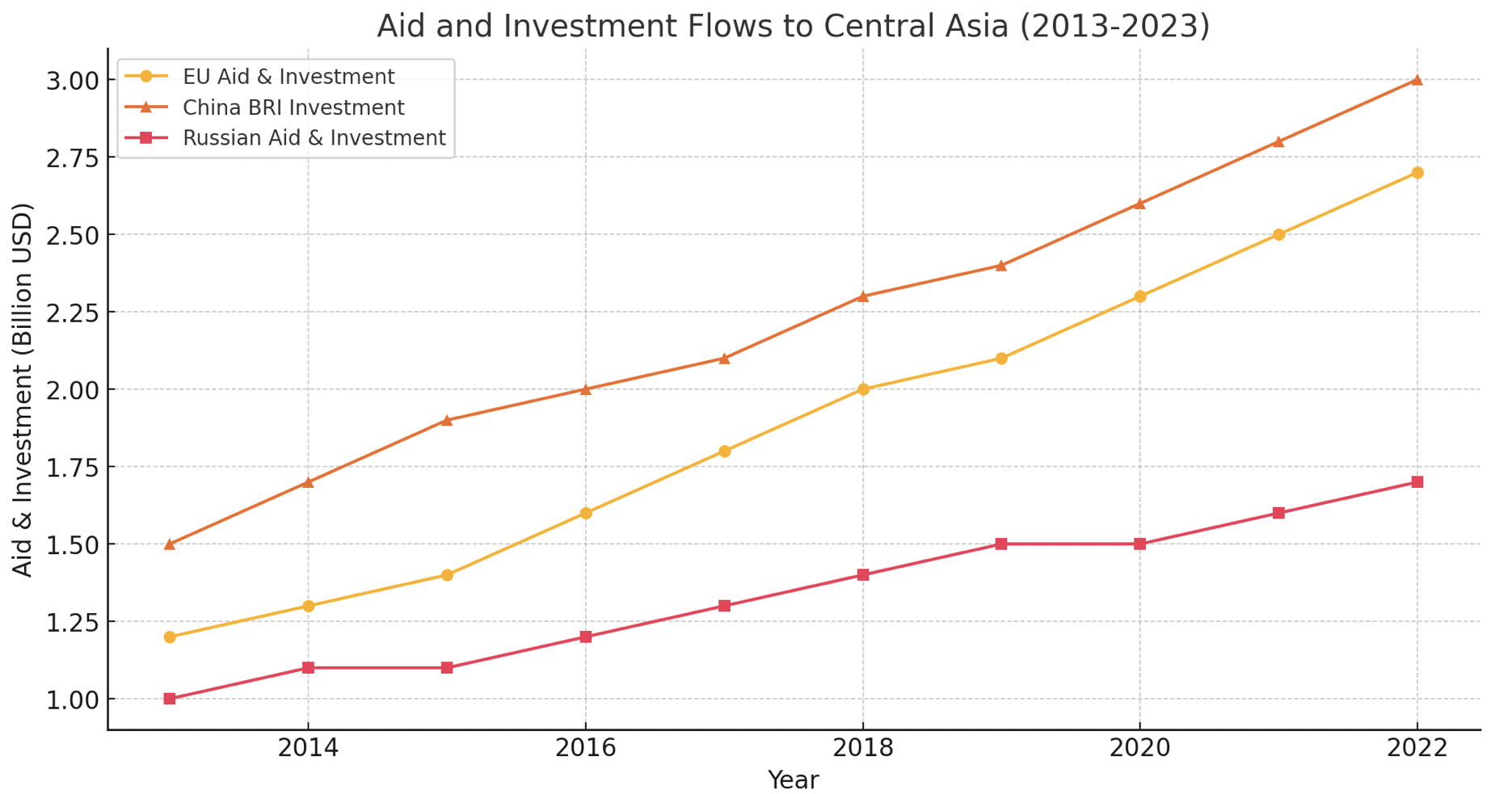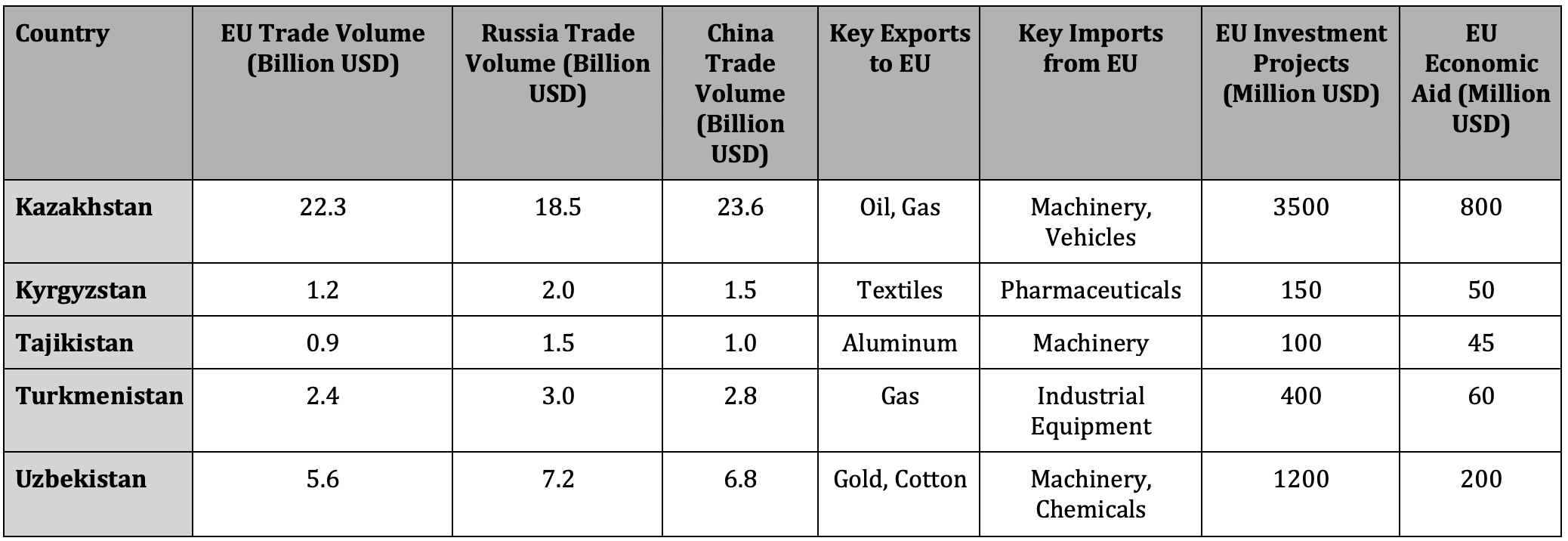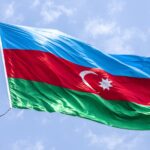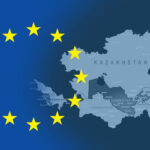Introduction
Central Asia has emerged as a focal point of geopolitical competition, significantly influenced by the war in Ukraine. This conflict has presented the European Union (EU) with unique opportunities to enhance its influence in a region traditionally dominated by Russia and China. As the global order shifts, the EU aims to offer an alternative to Chinese economic pressure and Russian political hegemony. However, this is not merely about ambition – the EU must act to avoid being sidelined.
As Central Asia draws the attention of global powers, the EU may have a chance to alter the balance of power. Anna Matveeva, in her article “A New Opening for EU–Central Asia Relations?”, emphasizes that the EU must present a positive alternative to powers like China and Russia. Amid geopolitical instability, Central Asian countries can elevate their international profiles, attract new investments, and demand greater security from new partners like the EU. Yet, to seize this opportunity, these nations’ leaders need high-level diplomatic skills and strategic thinking.
Evolution of EU Policy Towards Central Asia
Following the dissolution of the USSR in 1991, five former Soviet republics – Kazakhstan, Kyrgyzstan, Tajikistan, Turkmenistan, and Uzbekistan – gained independence. Soon after, the EU began establishing diplomatic relations with these new states. Official diplomatic relations were established in 1992 between the EU and Central Asian countries, marking the start of a new phase in the region’s international politics.
1990s In the initial years, the EU focused on supporting these countries’ transition to market economies and democracies. Through the Technical Assistance to the Commonwealth of Independent States (TACIS) program launched in 1991, the EU provided financial and technical aid to support economic and political reforms in Central Asia.
A significant milestone was the signing of Partnership and Cooperation Agreements with Kazakhstan, Kyrgyzstan, Tajikistan, and Uzbekistan in the mid-1990s. These agreements laid the foundation for bilateral relations, covering a wide range of issues, including trade, economic cooperation, legal and administrative assistance.
In 1996, the TRACECA (Transport Corridor Europe-Caucasus-Asia) program was launched to develop transport infrastructure and improve connections between Europe and Asia via the Caucasus and Central Asia.
2000s By 2001, the EU had established stable diplomatic relations with Central Asian countries and several key initiatives and programs aimed at supporting their development and integration into the international community.
Substantial progress in relations began post-2001 when the EU adopted its first comprehensive strategy aimed at regional cooperation, prosperity, and sustainability. During this period, the focus was on regional security and stability.
In 2007, the EU adopted a more detailed strategy that included six priorities: human rights, security, transport and energy, economic development, youth and education, and environment and water resources. This strategy aimed to strengthen cooperation and infrastructure development in Central Asia.
2010s In 2019, the EU introduced an updated strategy for Central Asia, incorporating lessons learned from previous years and highlighting three key priority areas: resilience, prosperity, and regional cooperation. The main elements of the 2019 strategy included shifting from a narrow security focus to a broader approach emphasizing the interconnection between resilience, prosperity, and connectivity. Emphasis was placed on migration opportunities rather than challenges. Improving cooperation in migration and mobility, border management, and combating human trafficking became important directions of the new strategy.
2020s The “Global Gateway” initiative, launched in 2021, included infrastructure projects aimed at developing global digital and climate projects by 2027. Central Asia was identified as a priority region for this initiative. Key areas included the digital transformation of Kyrgyzstan, the economic transformation of Turkmenistan, and educational reform in Tajikistan.
Another significant development was the EU-Central Asia Connectivity Summit held in Samarkand in 2022, where strategic autonomy and regional cooperation were emphasized. The EU and Central Asian nations are working together to address common challenges in areas such as energy, climate change, and digital infrastructure. This cooperation is not only beneficial for economic growth but also for ensuring political stability and security in the region.
In October 2023, the Global Gateway Forum presented regional projects and signed bilateral agreements on developing transport infrastructure and connectivity. A key point was discussing a corridor that could link Central Asia and Europe, significantly boosting trade and economic cooperation.
In the 19th EU-Central Asia Ministerial Meeting held in Luxembourg in October 2023, both regions reaffirmed their commitment to deepening cooperation. The discussions focused on enhancing connectivity, trade, environmental issues, and security, with a particular emphasis on the impacts of Russia’s war in Ukraine and the situation in Afghanistan. This meeting also endorsed a Joint Roadmap for Deepening Ties between the EU and Central Asia, which outlines strategic cooperation areas for the coming years.
In January 2024, the EU held an Investor Forum on transport connectivity between the EU and Central Asia. The focus was on investments in transport infrastructure and creating economic corridors, promoting closer economic cooperation between the regions.
Since July 2021, Terhi Hakala has held the position of EU Special Representative for Central Asia. Her main areas of activity include strengthening legal systems and the rule of law, supporting initiatives to combat terrorism and extremism, managing water resources, developing a green economy, promoting human rights and gender equality, improving the business climate, encouraging European investments in the region, driving digital transformation, and combating disinformation.
The evolution of the EU’s policy in Central Asia shows a gradual deepening and broadening of cooperation. Starting from basic diplomatic relations, the EU has progressively moved towards more comprehensive and broad strategic approaches that consider the region’s current challenges and opportunities.
The Significance of Central Asia for Global Players
Central Asia is not just a geographic region but a strategic chessboard where the interests of the world’s major powers intersect. For the European Union (EU), Central Asia is important not only as a source of energy resources but also as a key element of its energy supply diversification strategy. The EU imports 55% of its consumed energy resources, with oil dependency at 87% and natural gas at 70%. Kazakhstan, Turkmenistan, and Uzbekistan play significant roles in this context: Kazakhstan is a major oil exporter, while Turkmenistan and Uzbekistan are natural gas suppliers.
However, despite these strategic interests, the EU continues to lag in the struggle for influence in the region. Notably, China has increased its trade volume with Central Asia from $1.5 billion in 2001 to $70 billion in 2022. This expansion often comes with debt obligations for recipient countries, leading to dissatisfaction and protests, as seen in Kyrgyzstan and Tajikistan.
China has become a major player in Central Asia through its Belt and Road Initiative (BRI), which aims to enhance regional connectivity and economic integration. China has invested heavily in infrastructure projects, including roads, railways, and energy pipelines, linking Central Asia more closely with Chinese markets. These investments are designed to secure China’s economic interests and create a new Silk Road that boosts trade and investment flows between China and Europe via Central Asia.
Last year, in 2023, at the China-Central Asia Summit, the Xi’an Declaration was signed, and agreements worth $4 billion were concluded. China increased its investments and continues to expand its economic presence in the region. Despite its efforts, the EU has not yet been able to offer equally attractive economic conditions for Central Asian countries.
The EU is attempting to respond to this challenge with its 2019 strategy and initiatives aimed at global infrastructure, digital, and climate projects until 2027. At the aforementioned Global Gateway Forum, regional projects and bilateral agreements were presented, such as the digital transformation of Kyrgyzstan and educational reform in Tajikistan. Nonetheless, despite creating institutional mechanisms and physical presence, the EU’s influence remains minimal, and democracy and human rights in Central Asia are backsliding.
Russia, despite internal economic problems, maintains its influence through cultural and political ties. Central Asian countries benefit from increased trade with Russia, labor migration, and investments. Russia is the main destination for labor migrants from Central Asia, who send home significant amounts of money, supporting their countries’ economies. For example, remittances from Russia to Central Asia constitute a substantial share of some countries’ GDP.
Additionally, Russia remains an important partner in the energy sector. Kazakhstan and Turkmenistan actively cooperate with Russia in oil and gas exports. The EU seeks to reduce the region’s dependency on Russian energy resources by offering alternative routes and projects, such as the Southern Gas Corridor. However, Russia’s influence in this sector remains significant, posing challenges for the EU in implementing its strategies.
Russia’s strategy in Central Asia revolves around maintaining its historical influence through both security and economic mechanisms. The Collective Security Treaty Organization (CSTO) is a key security alliance that includes several Central Asian countries and aims to provide mutual defense and military cooperation. Economically, the Eurasian Economic Union (EAEU) fosters deeper economic integration, reducing barriers to trade and facilitating labor mobility among member states. These organizations help Russia assert its influence and counterbalance Western and Chinese activities in the region.
Thus, Central Asia has become a battleground for fierce geopolitical competition, with each power trying to strengthen its position. The EU, China, and Russia each play their roles, striving to leave their mark on this strategically important region. However, to compete effectively with China and Russia, the EU needs to not only implement new strategies but also impact the region’s development, taking into account its unique needs and challenges.
Apart from China and Russia, other powers like the USA, Turkey, and Iran are actively operating in the region, each seeking to enhance its influence and utilize Central Asia’s strategic position for their interests.
USA: In recent years, US foreign policy in Central Asia has been inconsistent. Despite budget cuts for the region, the US continues to support various programs in security, democracy, and economic development. The C5+1 dialogue format, involving the five Central Asian countries and the US, aims to strengthen cooperation and ensure regional stability.
Turkey: Turkey actively promotes its economic and cultural ties with Central Asia. Turkish companies invest in infrastructure and energy projects, while cultural and educational exchanges strengthen mutual understanding and cooperation. Turkey positions itself as an alternative partner, offering economic and cultural connections based on shared historical and cultural roots. The role of the Organization of Turkic States is also significant, through which Turkey strengthens its presence in Central Asia using the ethnic factor.
Iran: Iran also seeks to enhance its position in the region, offering cooperation in energy and trade, leveraging its strategic location and abundant natural resources. Despite sanctions and international pressure, Iran actively develops bilateral relations with Central Asian countries, proposing alternative routes and partnership programs.

Aspects of EU Cooperation with Central Asian Countries
The European Union’s (EU) cooperation with Central Asian countries encompasses a wide range of areas, including economic development, energy partnership, education, culture, human rights, and democracy. Let’s examine the main aspects of this cooperation.
Economic Cooperation: Kazakhstan maintains one of the most active economic and trade relationships with the EU among Central Asian countries. The EU is Kazakhstan’s largest trading partner, accounting for about 40% of its external trade. Key export items include oil, gas, mineral resources, chemical products, and foodstuffs. The Enhanced Partnership and Cooperation Agreement (EPCA), which came into force in March 2020, deepens bilateral relations in 29 areas such as trade and investment, taxation, and customs issues.
Uzbekistan is actively pursuing reforms aimed at improving the rule of law and economic development. The EU supports these efforts by providing technical and financial assistance to modernize the legal system and improve the business climate. Trade relations between the EU and Uzbekistan are expanding, fostering increased mutual trade volumes.
Kyrgyzstan is also a significant economic partner for the EU. The EU provides substantial aid to Kyrgyzstan to improve the rule of law and conduct institutional reforms. Trade and investment relations between the EU and Kyrgyzstan continue to strengthen, contributing to the country’s economic development.
Tajikistan collaborates with the EU on sustainable development and water resource management projects. The EU supports projects to improve irrigation systems, build hydroelectric power plants, and enhance access to clean water.
Turkmenistan maintains economic cooperation with the EU, particularly in the energy sector. The EU directs investments towards developing gas infrastructure and improving technological processes, despite limited human rights initiatives due to the authoritarian nature of the regime.
Energy Partnership: Kazakhstan is an important supplier of oil and gas to the EU, sending about 70% of its oil exports to the EU. Kazakhstan is also the world’s largest producer and exporter of uranium. The EU supports Kazakhstan in developing a green economy and transitioning to sustainable energy sources.
Turkmenistan possesses vast natural gas reserves, making it a key player in the energy market. The EU cooperates with Turkmenistan in the energy sector, directing investments towards developing gas infrastructure and improving technological processes.
Uzbekistan also plays a crucial role in the EU’s strategy to diversify energy sources. The EU supports projects to develop Uzbekistan’s energy infrastructure and modernize its energy sector.
Infrastructure Projects and Transport Connectivity: The EU actively invests in developing the region’s transport infrastructure, enhancing its attractiveness for international trade and investment. The TRACECA program and the INOGATE initiative aim to improve transport and energy infrastructure. In January 2024, at the Investor Forum on transport connectivity between the EU and Central Asia, investment opportunities in transport infrastructure were discussed. A corridor linking Central Asia and Europe in 15 days would significantly boost trade and economic cooperation.
Trans-Caspian Context: In recent decades, the Trans-Caspian region has become a key element in the European Union’s strategy to strengthen its position in Central Asia. Located at the intersection of important transport and energy corridors, it serves as a strategic artery linking Europe with the resources and markets of Asia. The EU is actively investing in the development of infrastructure and transport routes, such as the Trans-Caspian International Transport Route, to ensure sustainable and secure energy supplies, bypassing traditional routes through Russia. Special attention is given to the Trans-Caspian Gas Pipeline, which aims to connect Turkmenistan’s rich gas fields with European markets via the South Caucasus, including Azerbaijan and Georgia. This project promises not only the diversification of energy supplies for the EU but also significant economic benefits for all the countries involved in this route.
Education and Culture: The EU actively supports educational programs and cultural exchanges to strengthen mutual understanding and cooperation. Exchange programs like Erasmus+ offer students and teachers from Central Asia opportunities to study and teach in EU countries. Through cultural exchanges, the EU supports projects aimed at preserving cultural heritage and developing cultural ties between the regions.
Kyrgyzstan receives significant support from the EU in sustainable development and education. Important attention is given to improving the educational system, enhancing teacher qualifications, and modernizing educational institutions.
The Consequences of Taliban Afghanistan: After the Taliban takeover in Afghanistan in August 2021, the situation in Central Asia significantly complicated. This takeover caused global concern and posed numerous new challenges for Central Asian countries. The entire region became a key zone for containing religious extremism, terrorist networks, and drug trafficking.
As Jorge Soutullo and Niccolò Rinaldi write in their report for the European Union, Tajikistan expressed the greatest doubts and refused substantial engagement with the Taliban. Meanwhile, Turkmenistan and Uzbekistan began cooperating with the new Afghan government. The humanitarian crisis in Afghanistan led to a massive influx of Afghan refugees into Central Asian countries. These refugees became potential recipients of additional EU support through bilateral and regional programs for 2021-2027.
Central Asia has become an important region for curbing extremism and drug trafficking. Ensuring border security and internal stability has become a significant focus for all countries in the region. In October 2021, the Uzbek Deputy Prime Minister met with a Taliban delegation to discuss trade, economic interaction, border security, and railway projects. Turkmenistan also initiated diplomatic efforts to reassure Central Asian neighbors and promote economic cooperation.
The fight against drug trafficking is a key priority in the EU’s engagement with Central Asia. The region is a major transit route for illicit drugs, and the EU collaborates with local governments to combat this issue through various programs and initiatives. These efforts include strengthening law enforcement capacities, improving border controls, and enhancing regional cooperation to disrupt drug trafficking networks.
The European Union continues regular dialogues on political and security issues aimed at addressing problems related to the situation in Afghanistan.
Human Rights and Democracy: Promoting democracy and human rights is a central element of the EU’s policy in Central Asia. The EU actively supports political dialogues and human rights initiatives. In Kazakhstan and Kyrgyzstan, the EU supports initiatives to improve the rule of law and conduct institutional reforms.
Despite economic cooperation, Turkmenistan remains a challenge for the EU’s human rights initiatives due to its authoritarian regime. Nevertheless, the EU continues to promote human rights, gender equality, and civil rights protection.
Uzbekistan actively engages with the EU in human rights and democracy, especially after the leadership change in 2016. The EU supports reforms aimed at improving the rule of law and conducting institutional reforms.
Tajikistan receives EU support for environmental projects aimed at environmental protection and combating climate change. The EU also supports programs to improve the healthcare system, fight infectious diseases, and increase the accessibility of medical services for the population.
The cooperation between the EU and Central Asian countries covers a broad spectrum of areas, contributing to the region’s sustainable development and modernization. Economic development, energy partnership, educational programs, and human rights support are key elements of this interaction, offering various pathways and solutions for further growth and integration into the global community.

Conclusion
The EU’s increasing engagement with Central Asia highlights the region’s importance in global geopolitics. Cooperation between the EU and Central Asia holds significant potential but faces several serious challenges. Over the past decades, the EU has actively sought to strengthen its position in the region through various initiatives and projects aimed at economic development, infrastructure improvement, and the promotion of human rights. Despite the successes achieved, substantial obstacles remain that limit the EU’s influence.
Migration management is another crucial area of cooperation. The EU works with Central Asian countries to address issues related to irregular migration, human trafficking, and asylum. By improving migration governance and enhancing legal pathways for migration, the EU aims to create a more orderly and secure migration system.
The main issues include internal political instability in Central Asian countries, economic and political competition from China and Russia, and cultural and value differences between the EU and Central Asian states. Internal instability and authoritarian governance styles hinder the implementation of democratic reforms and limit the potential for economic cooperation. The economic influence of China and Russia significantly surpasses that of Europe, creating additional challenges for the EU in the region.
Despite these challenges, the EU remains an important economic and political partner for Central Asia. To strengthen its position in Central Asia and achieve sustainable influence, the EU needs to consider the following strategic steps:
Firstly, enhancing political dialogue. Intensifying political dialogue with Central Asian leaders aimed at achieving mutual understanding and considering both sides’ interests. This will help overcome political barriers and build trust.
Secondly, increasing financial support. Increasing the volume of financial assistance and investments in key projects such as infrastructure, energy, and education. This will allow competing with Chinese and Russian investments and offer the region alternative financing sources.
Thirdly, promoting human rights and the rule of law. The EU should continue to promote human rights and the rule of law, using political and financial mechanisms to support democratic reforms, despite resistance from local authorities and officials.
Fourthly, developing educational and cultural programs. Actively supporting educational and cultural exchanges, as well as professional training programs to develop human capital and strengthen mutual understanding between peoples.
For successful cooperation, the EU must consider local specificities and adapt its strategies to the specific conditions of Central Asian countries. An individual approach is necessary as each Central Asian country has its unique characteristics and needs. Interaction should be based on an individual approach, offering tailored solutions and initiatives. It is crucial to actively involve local communities, non-governmental organizations, and civil society in project development and implementation processes. This will help ensure the sustainability and effectiveness of EU initiatives. EU strategies should be flexible and adaptive to respond promptly to changes in the region and consider the dynamic and diverse developments among the five Central Asian countries.
Following these recommendations and considering local specificities, the EU can strengthen its position in Central Asia, contributing to the region’s sustainable development, stability, and prosperity. Strategic partnership with Central Asia remains an important direction of the EU’s foreign policy, and the successful achievement of set goals requires the continuation of active and flexible policies aimed at creating mutually beneficial conditions for cooperation and development.
Sources:
- The East Asia Forum: http://www.eastasiaforum.org
- International Politics and Society: http://www.ips-journal.eu
- The Astana Times: http://astanatimes.com
- Mobility and Transport European Commission: http://transport.ec.europa.eu
- The Diplomatic Service of the European Union: http://www.eeas.europa.eu
- Centre for European Policy Studies: http://www.ceps.eu
- U.S. Army’s Foreign Military Studies Office (FMSO): http://fmso.tradoc.army.mil
- South China Morning Post: http://www.scmp.com
- War on the Rocks: http://warontherocks.com
- New Geopolitics Research Network: http://www.newgeopolitics.org
- politico.eu: http://www.politico.eu
- The EU Central Asia Invest Programme: http://eu-cai.org
- eu: http://moderndiplomacy.eu
- Матвеева, Анна. “A New Opening for EU–Central Asia Relations?” Carnegie Endowment for International Peace.
- Jorge Soutullo / Niccolò Rinaldi. “Central Asia” europarl.europa.eu/
- Матусевич, Ян. “The EU Central Asia Strategy and Its Impact on Migration” CMPD.org.
- Dzhuraev, Emilbek & Muratalieva, Nargiza. “The EU Strategy on Central Asia” FES.de.
- Озтарсу, Мехмет Фатих. “The EU’s Efforts to Counter China in Central Asia” Cepa.org.
- Kizekova, Alica. “The European Union in Central Asia: Balancing Competing Actors and Opportunities for the V4 Countries” Ústav mezinárodních vztahů Praha.
- Eurasian Research Institute. “Economic Cooperation between Central Asia and the European Union” Eurasian Research Institute.
- Boonstra, Jos. “Reviewing the EU’s approach to Central Asia” FRIDE.
- Dutta, Ankita. “Energy Dynamics in EU-Central Asia Relations” Indian Council of World Affairs.
- EEAS Europa. “EU’s Special Representative for Central Asia” EEAS Europa.
- EEAS Europa. “EU-Kazakhstan Relations” EEAS Europa.
- EEAS Europa. “EU-Kyrgyzstan, Tajikistan, Turkmenistan, and Uzbekistan Relations” EEAS Europa.













